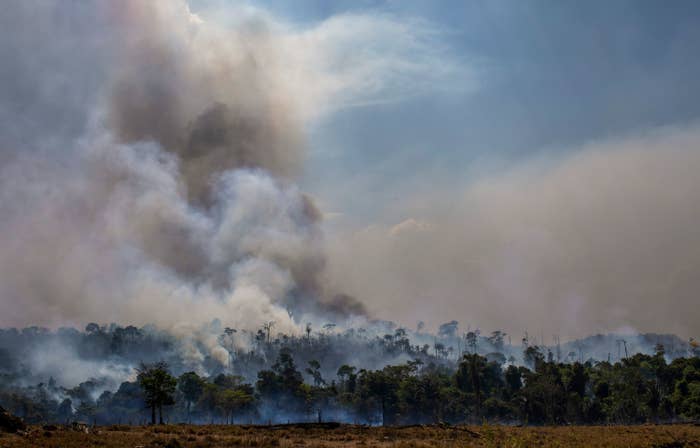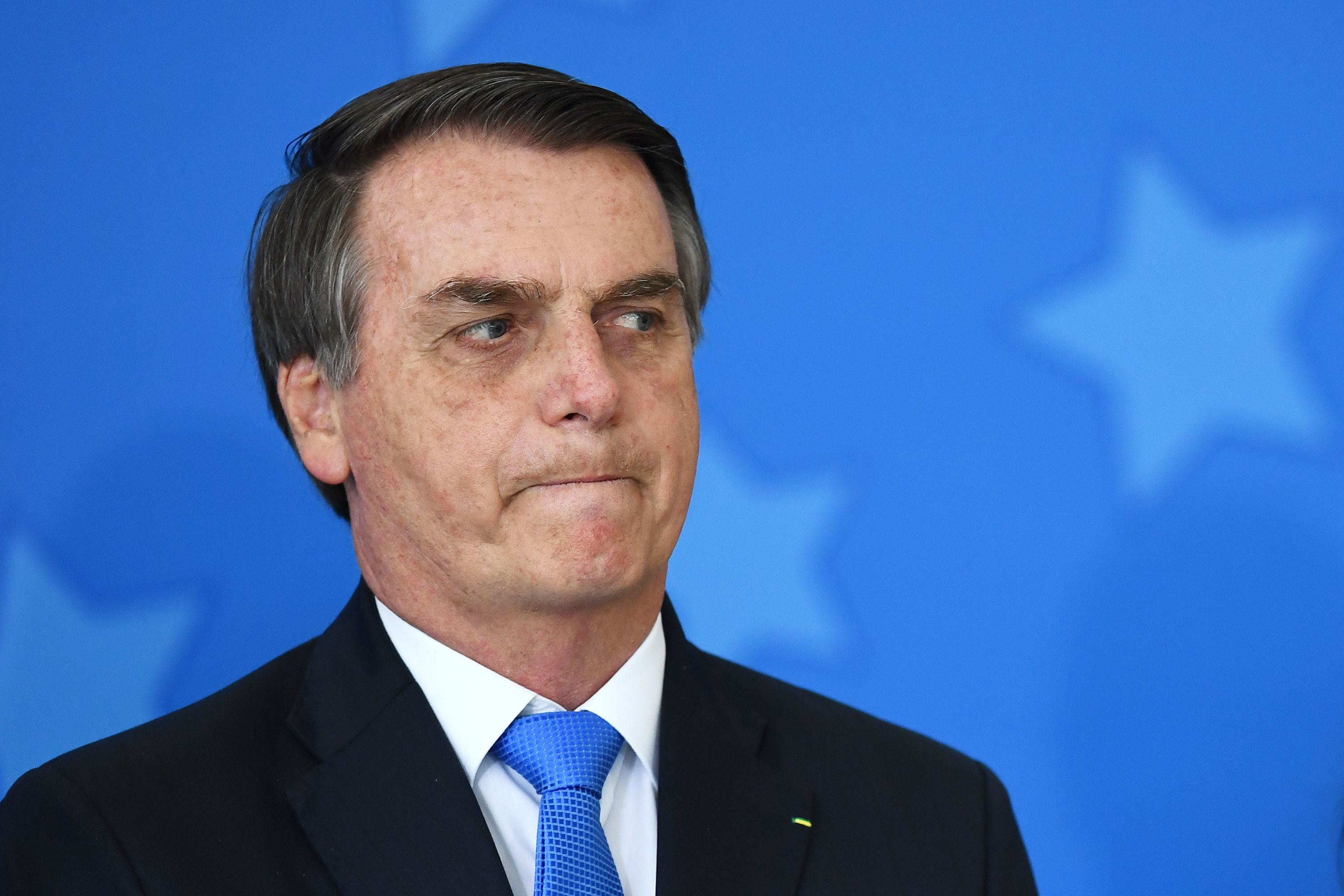
Standing on the edge of the Brazilian Amazon rainforest in the early 2000s, Douglas Morton looked out at an “apocalyptic” scene: charred vegetation at his feet, smoke filling the skies in all directions, and an orange haze hanging in the air.
The source of all the destruction, and the motivation for Morton’s trips back there year after year, was rampant deforestation. Morton, now a NASA scientist, was then one of the researchers figuring out how to better use satellites for monitoring deforestation.
“The first years I spent in the Amazon were some of the record years of deforestation that we’ve ever mapped from satellite data,” Morton, who leads the Biospheric Sciences Laboratory at NASA’s Goddard Space Flight Center, told BuzzFeed News. Research findings from that era, filled in with imaging from satellites, helped drive action to dramatically scale back deforestation and reverse the trend.
Now deforestation is creeping back up. This month, news of forest clearing went viral after smoke from deforestation-linked fires temporarily plunged Brazil’s largest city into darkness. Consequently, Morton and other scientists who have studied the Amazon for years have been thrust into the spotlight, juggling media requests from around the world, pushing back against misinformation, and wrestling with their own emotions about the Amazon’s uncertain fate.
“I have gotten more emails and Facebook hits from my relatives than I have gotten in a year combined,” Michael Coe, director of the Amazon Program at Woods Hole Research Center, told BuzzFeed News. “They are all asking: ‘What’s going on? What are you doing about it?’”
“I’ve just tried to tell them the story — it’s a bad year,” Coe said, and “this is what happens when deforestation gets out of hand.”
There have been more than 80,000 fires in the Amazon rainforest so far in 2019, representing an over 80% increase compared to the same period last year, according to National Institute for Space Research (INPE) data. It’s become clear that deforestation is driving the fires this year.
This surge in deforestation and fires in 2019 comes in Brazil’s far-right president Jair Bolsonaro’s first year in office, after he campaigned on opening the Amazon up for development. In mid-July, when INPE’s scientists in Brazil released preliminary data showing a dramatic uptick in deforestation, Bolsonaro called the data a “lie,” then abruptly fired INPE leader Ricardo Galvão. More recently, Bolsonaro tried to blame the fires on members of nongovernmental organizations. Finally, amid growing international pressure, Bolsonaro pledged to send troops to fight the fires and then banned the use of fires to clear land for 60 days.
These incidents have shaken Amazon researchers.
If the public loses trust in the leading agencies and their warnings about deforestation, “it will be very damaging for the future of the Amazon,” said Paulo Brando, an assistant professor at the University of California, Irvine, and collaborator with the Amazon Environmental Research Institute. Brando spent about 15 years studying the Amazon forest and climate change.
Brando has noticed “a lot of confusion” about the magnitude of the fires — the fires today are “a big deal,” Brando said, but he added that it's “not the worst fire year in history.”
Though fire activity is higher this year across the Brazilian Amazon than any year since 2010, it was worse in the early 2000s. What’s changed now is that researchers are far better equipped to track the fires and measure the impact of forest loss.

Satellite data revolutionized how scientists, and the public, understood the Amazon. “We went from looking at maps that said ‘no data available’ on this region to very clear, regular pictures,” Coe said.
Scientists could better track deforestation, identify where it was happening and how fast it was occurring, and examine myriad impacts to the climate and biodiversity. Some of the results were alarming.
For one, scientists have a better sense of how devastating a single fire and repeated fires can be on the rainforest. “Even a single, low-intensity fire, which might have flames up to our knees, can kill 80% of the trees in an Amazon rainforest,” Morton said.
These fires also have a significant climate impact. The Amazon forest is one of the largest sinks of greenhouse gases, with its trees absorbing emissions from the air. But when these rainforest trees are cleared or burned down, they can release some emissions back into the air and reduce the remaining forest’s ability to be this natural emissions sink.
“After five successive fires, a forest, on average, loses over 90% of the carbon stocks,” Danielle Rappaport, another NASA researcher who works with Morton, told BuzzFeed News.
The fact that Amazon deforestation rates dropped in the mid-2000s, a result of the Brazilian government, businesses, and activists working together, is often touted as a major environmental and climate win. The reverse of this trend in 2019, when the climate crisis is more urgent than ever, is why scientists think the Amazon fires are now getting attention.
“It’s a constant effort to shape the situation so you get as little deforestation as possible," Coe said. So to see an increase in deforestation in recent years, and especially 2019 — “that’s a little frustrating.”
But he sees one way to combat it is by continuing to gather data on who is setting the fires and where. “Let’s roll up our sleeves and keep going,” Coe said. “It’s not a problem that just disappears.”
